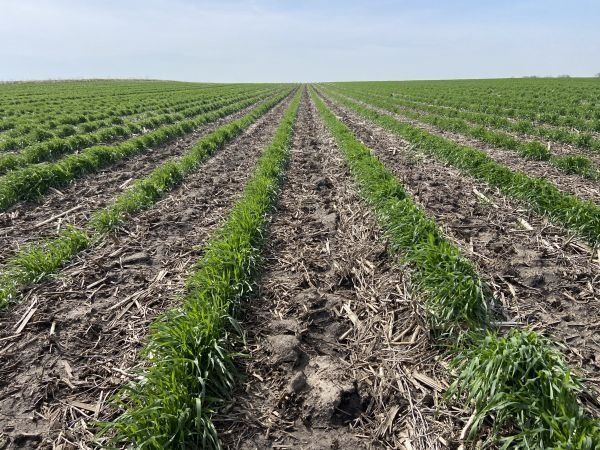Cover Crops and Other Conservation Practices Continue to Gain Steam

Warmer weather is finally here and many farmers begin to get their planter ready to kick off another growing season. While there may be a visible flurry of activity on the farm, our waterways and streams are silently busy accommodating extra rainfall that typically falls during the season. The additional waterflow is carrying soil nutrients.
Dr. Laura Gentry, Director of Water Quality Research, Clay Bess, Precision Conservation Management (PCM) Operation Manager, and Brent Weathers, Farmer in Vermillion County led a panelist discussion about their experience growing cover crops and managing other conservation practices.
The panelists answered questions from farmers that ranged from what conservation practices worked best, to what is the benefit of joining the PCM program and gave candid authentic answers.
PCM is a farmer service program created in response to the Illinois Nutrient Loss Reduction Strategy (NLRS) to help farmers understand what is needed to help meet the goals of the strategy and help them meet those goals. The program focuses on cover crop implementation.
The Illinois NLRS was released in 2015 and showed that in many years Illinois is the greatest contributor of nitrogen and phosphorus to the Gulf of Mexico out of the Mississippi River Watershed which in turn creates a hypoxic zone in the waters of the Gulf. The hypoxic zone is also known as a ‘dead zone’ which refers to the oxygen levels in the water that do not allow organisms to survive following an algae bloom spurred by the increase in nitrogen and phosphorus entering the Gulf from the Mississippi River.
One of the best ways to address this problem is by growing cover crops and using other conservation practices voluntarily to allow farmers to use these practices in the ways that work most effectively and efficiently in their own farming operations without regulations and strict mandates. Additionally, maintaining cover crop use as voluntary allows farmers to adapt them to match the resource concerns and management challenges that they view as most pressing while managing for improved soil properties, weed management, nutrient cycling and water-holding capacity.
If the benefits of cover crops above were not enough, they also pack another key benefit. Cover crops sequester carbon.
Today, addressing climate change and finding a solution is at the top of mind to those in many industries. Agriculture is no different.
During the panel, Brent Wethers pointed out that farmers are at the forefront to help take carbon out of the air. Dr. Laura Gentry followed up by saying there are not many occupations who can impact carbon like farmers, and they should own this space and they should accrue the benefits from the good work they are doing.
In addition to helping farmers use their own data to make conservation decisions, PCM collaborates with corporations like PepsiCo to feel out what carbon markets could mean for farmers and highlights the importance behind farmers receiving the financial payout they deserve from this cutting-edge idea.
Rhiannon Branch at Brownfield hosted the panel and the Illinois Soybean Association pitched the idea to collaborate between the two commodity organizations.
Clay Bess spoke about how excited he is about the growth of PCM and the potential it has with being able to connect those dots. Dr. Laura Gentry closed with pointing out how this program truly is for farmers and while they are helping their profitability, they are also helping more than themselves.






